Win CENS ProFlex DX5 earplugs worth £1,149 – enter here
History of Skeet shooting: how it all began
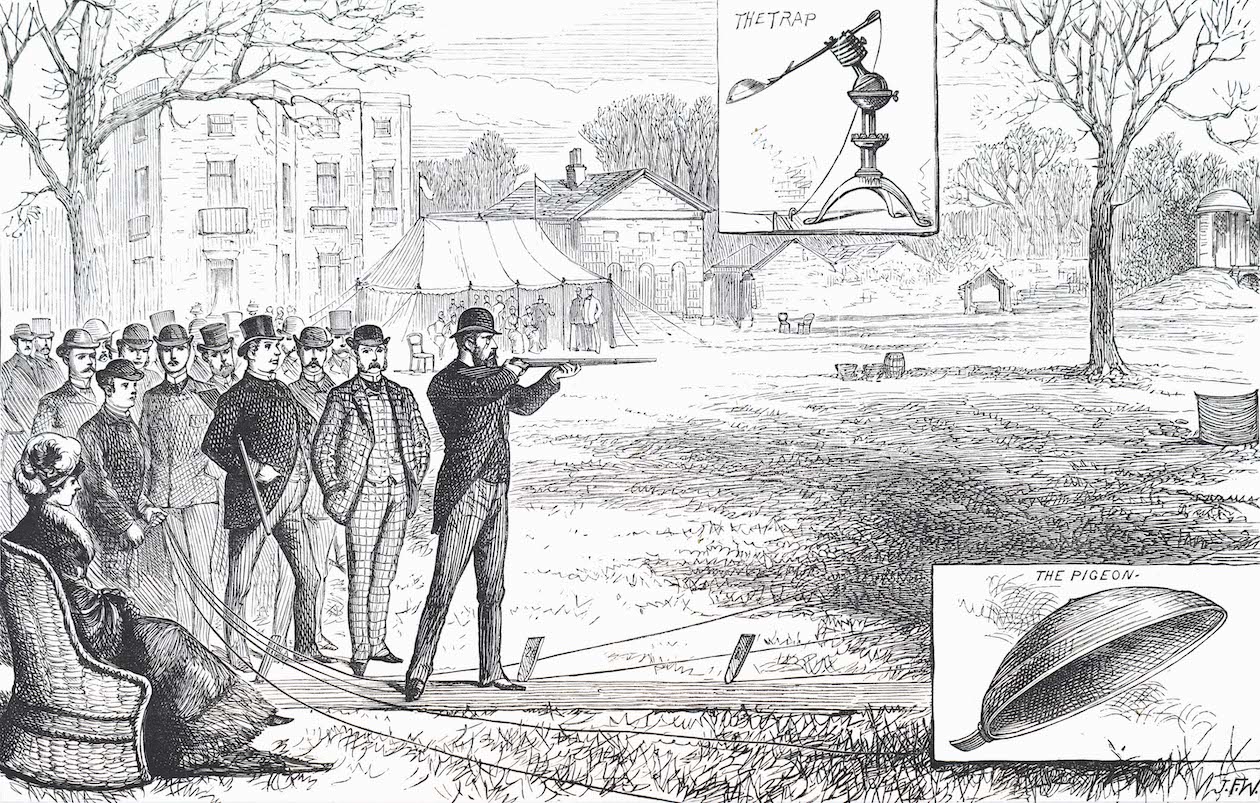 Illustration depicting experimental clay pigeon shooting at the Ranelagh Club. Dated 19th century. (Photo by: Universal History Archive/Universal Images Group via Getty Images)
Illustration depicting experimental clay pigeon shooting at the Ranelagh Club. Dated 19th century. (Photo by: Universal History Archive/Universal Images Group via Getty Images)
The history of Skeet shooting
Some 150 years ago, the shotguns that were putting a partridge or two in the pot for supper were using black powder explosive. It powered everything from the highwayman’s pistol to the Navy’s cannon. The flintlock-spark ignition system, with a cloud of smoke right in front of your face, was disappearing in favour of an explosive percussion cap that was much more reliable and didn’t pack up in the rain. Some shooters were still using muzzle-loading guns, where everything was stuffed down the barrel at the ‘dangerous end’ using the loading rod. The days of the modern cartridge were some way off. Open the gun, pop in a cartridge, close the gun and pull the trigger was for the future. (Read our list of the best Skeet guns.)
So if our enthusiastic shooter wanted to practise, what did they do? Well, the same thought process might occur today; find a mate to throw something high into the air and have a shot at it. The health and safety people of that time might have wanted to check it out, but a glass bottle would be spectacular, particularly if it was half-full of water, powder or feathers. (Read why Skeet shooting is a sure-fire way to improve your skills.)
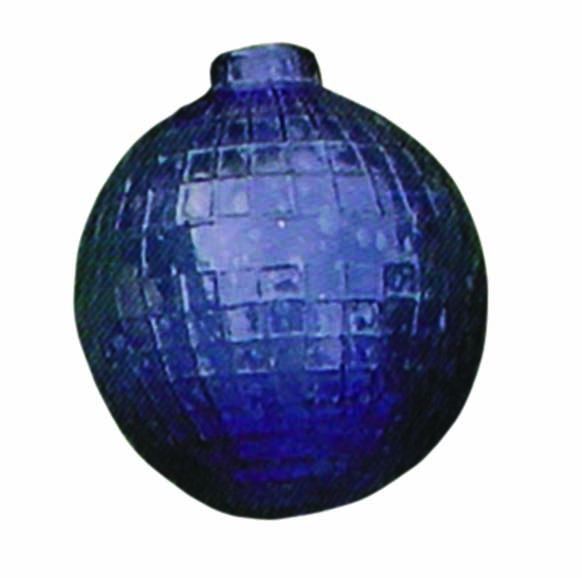
Glass ball targets made for spectacular hits
Complete balls
That’s what they did. There was large-scale production of glass balls, about two or three inches in diameter. If a large order was required, the balls would be packed in barrels layered with sawdust to prevent breakages.
In the UK and America, glass-ball shooting started to become available at the live pigeon shooting grounds. In the first developments, the spheres were projected vertically into the air from a spring device when the shooter called for the target, but unlike a pigeon, it did not fly off in a random direction.
Captain Adam Bogardus developed a spring trap based on a cart leaf spring with a cup at one end, which threw the glass ball in a more challenging arc presentation. He promoted glass balls with a ridged surface to improve pellet impact. The sporting interest started to take off.
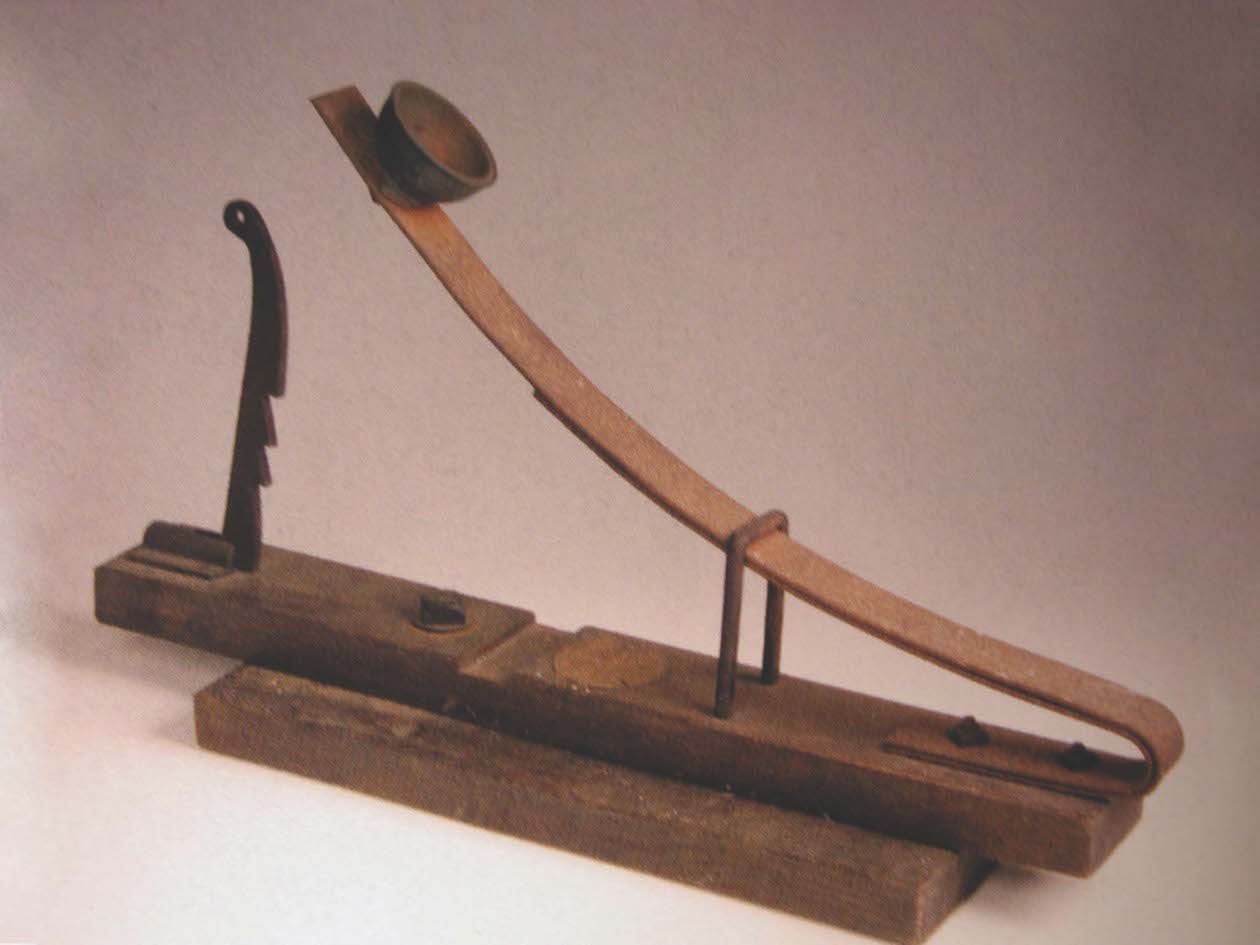
Captain Bogardus’s glass ball thrower
On both sides of the Atlantic, a number of developments in launch traps and target-ball design happened quickly. During the 1870s and ’80s, a number of companies produced rotatable traps that could throw single or double targets on random and more variable trajectories with greater power.
Thin metal balls, pottery clay balls and composition pitch balls, often packed with charcoal, mineral powder or sawdust gave more spectacular hits. As with live pigeon shooting, significant prizes or wagers were often involved. Major competitive displays with large audiences were popular in the US and Europe, where several thousand glass balls would be shot by each competitor.
Bogardus and a gentleman named William F Carver, whose earlier career was as a professional buffalo hunter for the Midwest meat trade, toured America entertaining the paying public.
In London in 1881, Doctor Carver had a match with W Scott, where each competitor shot 9,950 glass balls. Carver won by two with a score of 9,737.
Enter the disc
One of the disadvantages of glass targets is that the shooting ground is covered with sharp glass fragments. As a result, developers of artificial targets started to use other less inconvenient materials. The actual inventor of the disc target is not absolutely clear but most researchers seem to favour George Ligowski from Ohio. It would have been perfectly possible to use glass discs, but Ligowski opted for a pottery-clay material. Ligowski patented both the clay target and his design for a launch trap in the early 1880s. With the developments in breech-loading shotguns and artificial targets, competitive clay shooting rapidly increased in popularity. Ligowski enlisted Bogardus and Carver to put on competitive displays across the US to promote the sport of clay shooting and in particular his clays and traps.
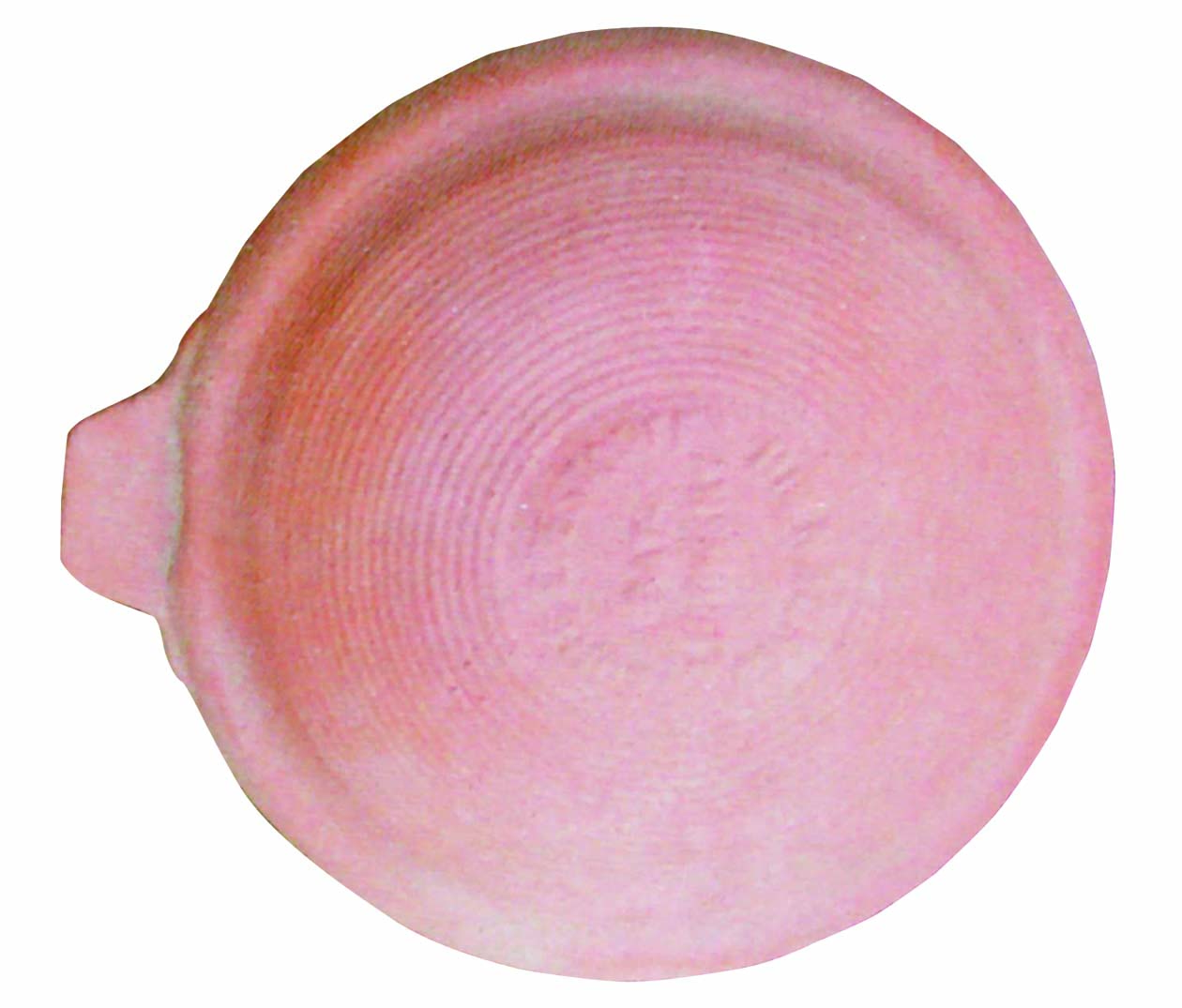
The disc target was invented in the early 1880s
In the UK, The Field, our sister magazine, in 1882 wrote about terracotta clay-target shooting and reported in 1883 on a demonstration of clay trap shooting at the Ranelagh Club in Fulham, in front of a large audience. Mineral-filled pitch or natural resin targets had been experimented with in the days of ball targets, and this technology came to the fore in the manufacture of disc targets.
By 1900, the modern clay target – based on a cheap mineral powder and pitch from coal or petroleum tar – was well established. More recent developments reflect the need to maximise the use of lower-toxicity binders and indeed, natural resins are making a comeback. (Read more on different clay targets here.)
At about the same time, national organisations started to form in America, the UK and Europe to promote clay shooting and establish unified rules for national competitions.
Shooting industry companies were frequently involved in this process, providing financial support to encourage the development of the sport and promote demand for their products.
The early British organisation went by the ‘catchy’ title of the Inanimate Bird Shooting Association, which was formed in 1892. The name changed in 1903 to the Clay Bird Shooting Association. The Clay Pigeon Shooting Association we know today was in turn formed in 1928.
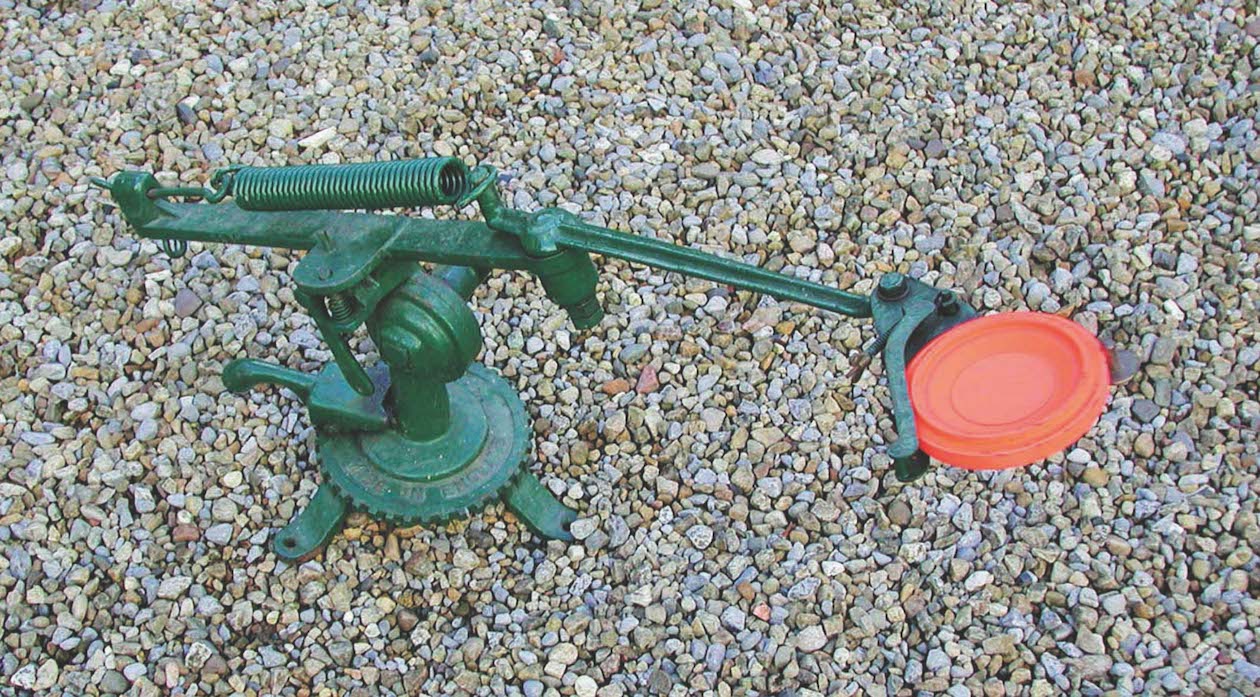
Rotatable traps were developed in the 1870s and ’80s
Clock-face
Just before World War I, Charles Davies and his family, keen game shooters in Massachusetts, contemplated a competitive clay pastime by which shooters would practise on all of the potential target angles in the game-shooting field. They put a clay trap at the edge of a 25-yard circle at a point they deemed to be 12 o’clock. The manual trap fired a target directly over six o’clock on the other side of the circle. The target was presented to the shooters as they moved around the clock face at each ‘hour’ shooting station; starting at 12 with a going-away target, quartering-away at five and 10 past, a crosser at quarter past and incomers at 20 past, 25 past and six o’clock. Then following on to complete the circle. Two clays were shot from each shooting position, giving 24 shots in a round; the final cartridge in a box of 25 was shot from the centre of the circle at a close and fast overhead incomer from the trap at a position of 12 o’clock.
The original rule was for the gun start position to be dismounted, out of the shoulder, just as Olympic Skeet is shot today. And the centre-circle shooting position was the precursor of the Peg 8 stand in this challenging Olympic discipline.
Shooting from the circle in every direction in a field proved to be rather inconvenient, so another trap was put at six o’clock, sending the clay over 12, which gave a space-saving semi-circle of fire for the same target regime. This also enabled spectators to watch the shooting.
Then, to add variation, the six o’clock trap was placed up a small tower and the essentials of Skeet had been created. And the additional challenge of doubles could be used.
The word ‘skeet’ came some years later when an American shooting magazine held a competition to find a name for the increasingly popular sport. It is said that the word was based on Scandinavian, but I can’t find a connection.
A final development of the Skeet layout came when the target flight lines were angled slightly away from the central diameter line across the circle. This reduced the risk of clay fragments hitting the competitors when shooting from the stands adjacent to the traps.
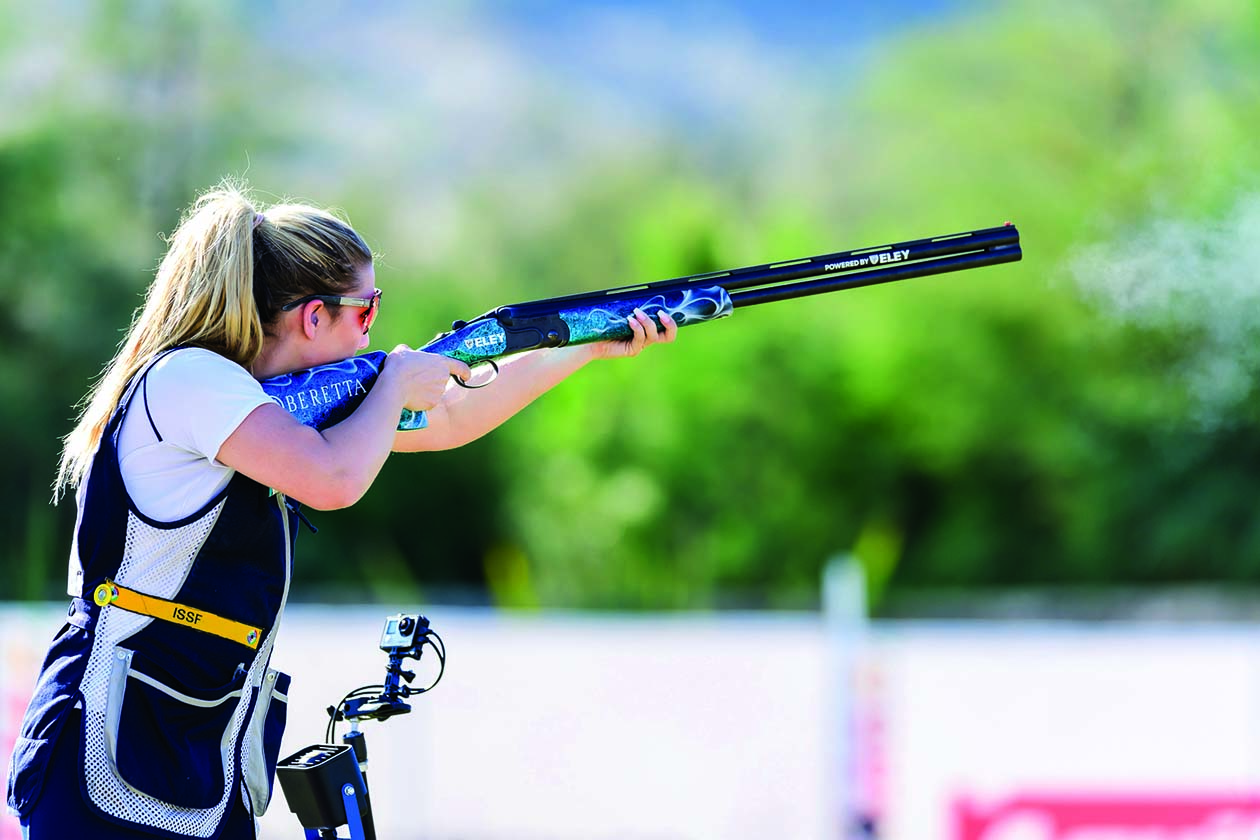
Skeet has grown in popularity to become an international sport since its Olympic debut in 1968
Competitions
In the early 20th century, the clay competitions were a continuation of the going-away-target trap disciplines. The Dougall Memorial Trophy was first presented in 1896 and is still a prestigious British competition today.
Skeet shooting gained popularity rapidly in the UK during the 1930s. Articles appeared in Shooting Times, our other sister magazine, on how to set up a Skeet range and what the rules should be for competitions. Cartridge manufacturers, gunmakers and the CPSA actively promoted the sport with literature and instructions. By the mid-1930s there were dozens of Skeet ranges across the UK.
Although international Skeet competitions grew rapidly after World War II, the first appearance of Skeet in the Olympics was in Mexico City in 1968.
Why Skeet is so popular
The popularity of the Skeet game is its simplicity and yet difficulty. For general shooting practice, the targets can be taken as singles, doubles on report, or simultaneous doubles. Or if you wish to test yourself, shoot everything as simultaneous doubles. The gun start position can be pre-mounted in the shoulder as in English Skeet or ‘gun down’ with the stock below the elbow, as in Olympic skeet. But, in competition with a specific target sequence, Olympic Skeet, where the targets are faster, gun down is the rule and there is a variable time delay when you call for the first target. Concentration and technique are really tested.
If you want to learn more about the history of clay shooting, I suggest reading Clay Pigeon Shooting: A History by Michael Yardley.
Related Articles
Get the latest news delivered direct to your door
Subscribe to Shooting Times & Country
Discover the ultimate companion for field sports enthusiasts with Shooting Times & Country Magazine, the UK’s leading weekly publication that has been at the forefront of shooting culture since 1882. Subscribers gain access to expert tips, comprehensive gear reviews, seasonal advice and a vibrant community of like-minded shooters.
Save on shop price when you subscribe with weekly issues featuring in-depth articles on gundog training, exclusive member offers and access to the digital back issue library. A Shooting Times & Country subscription is more than a magazine, don’t just read about the countryside; immerse yourself in its most authoritative and engaging publication.







